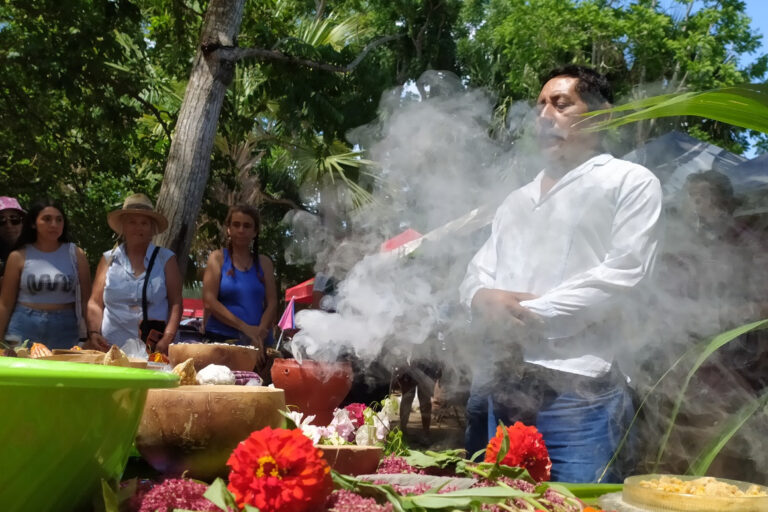- Maya farmers in Yucatán, Mexico, have rekindled a pre-Hispanic ceremony that calls for rain from the god Cháak as the state suffers its worst drought in 50 years.
- The extended dry season has prevented local farmers from generating sufficient harvests to provide enough food to sustain Indigenous people from remote regions.
- In early May, the Yucatán Peninsula experienced a record high temperature of 43.7°C (110.7°F) after an already year-long drought.
- Pollution from industrial pig farms and monocrop plantations is contaminating groundwater systems and cenotes, considered sacred by the Maya and relied upon to supply farms in rural communities.
As he carves through dense jungle foliage with a sharpened sickle, 65-year-old Eliezer Mendez Díaz scours for building materials. He plans to make a sacred altar for the Maya rain god, Cháak, in the hope that the lightning-wielding deity will nourish his crops and alleviate his village from extreme drought. He stops in his tracks momentarily to admire a turquoise-browed motmot bird (Eumomota superciliosa) swinging its double-tipped tail like the pendulum on a grandfather clock. Like all life on the Yucatán Peninsula, it’s also waiting for the rains, late by more than a month now.
Mendez Díaz is a village elder and farmer from Yaxcabá, a village of 3,000 people some 29 kilometers (18 miles) southwest of the ancient Maya city of Chichén Itzá. He leads a group of five Indigenous men to prepare for the revered Ch’a Cháak ceremony, one of the last surviving pre-Hispanic Maya traditions in Mexico. The heat wave has dried out local farms, known as milpas, and compelled people to call on ancestral spirits to supply water for their harvests. Similar pleas to local authorities to aid their village during these difficult times have fallen on deaf ears.
“We have nowhere left to turn, so we must take matters into our own hands,” Mendez Díaz says.
The team from Yaxcabá works tirelessly in the scorching heat, climbing trees if necessary to collect special vines hanging from the thick canopy overhead. These will be fastened to four corners or cardinal points of the altar and connect with the jungle, in the belief that its guardians will hear their prayers.


